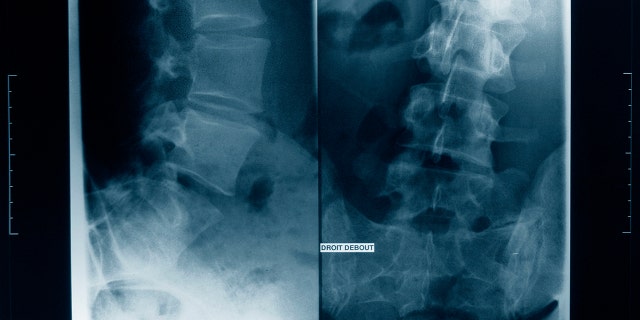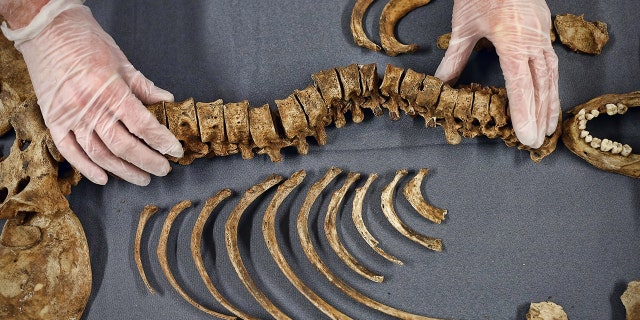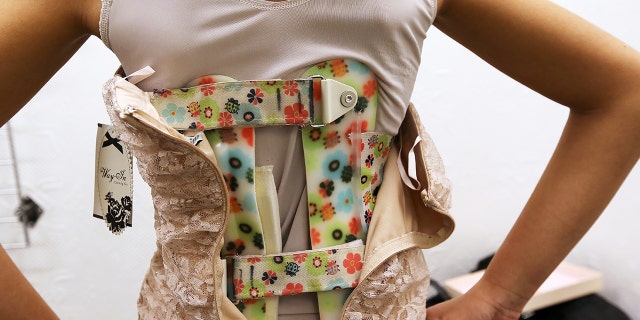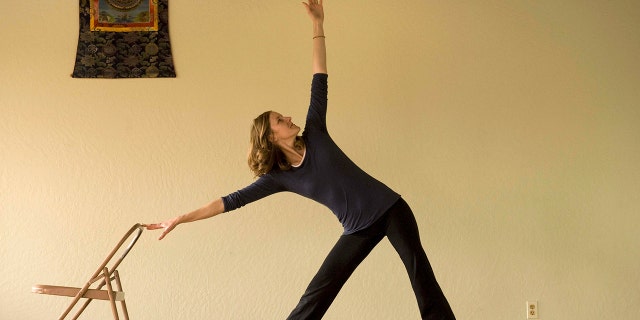
Scoliosis is a spinal condition that occurs when there is an abnormal curve of the spine.
Often, scoliosis cases are mild and do not need extensive treatment, but there are very severe cases that require surgery and crucial care for the spine.
Scoliosis is typically diagnosed through X-rays.
The cause in an overwhelming number of cases is unknown.
10 VITAL HEALTH SCREENINGS YOUR CHILD NEEDS
Here is everything that you need to know about scoliosis, including the different types and the variety of treatment options that are available for the condition.

Scoliosis is typically diagnosed with X-rays. (BSIP/UIG Via Getty Images)
- What causes scoliosis?
- Can scoliosis be corrected?
- What are the symptoms of scoliosis?
- When do symptoms of scoliosis first appear?
- What should I avoid doing with scoliosis?
1. What causes scoliosis?
For some 80% of scoliosis cases, the direct cause is unknown.
This is called idiopathic scoliosis. When the cause of scoliosis is known, it is likely congenital, neuromuscular or degenerative.
Congenital scoliosis is seen in babies and occurs when the spine does not form properly in the womb. Neuromuscular scoliosis is one that is associated with a muscular or nerve disorder such as cerebral palsy, trauma to the spinal cord or muscular dystrophy.
Degenerative scoliosis is seen in older people and is from wear and tear on the spine, causing it to curve as an individual ages.

Scoliosis is an abnormal curve in the spine. It is a condition mostly seen in children. (Carl Court/Getty Images)
2. Can you correct scoliosis?
Scoliosis can be corrected, but the way it is treated will depend on the severity of the condition.
Some people with mild cases might not need treatment at all. Others may need to wear a back brace to stop the curve from worsening.
Specific exercises for patients are also known to work.
5 SIGNS YOUR BACK PAIN IS SOMETHING SERIOUS-AND WHEN TO VISIT A CHIROPRACTOR
For severe cases of scoliosis, surgery may be needed. The main type of surgery used to correct severe scoliosis is spinal fusion.
During spinal fusion, vertebrae are realigned and fused together. This allows them to heal into a single bone.
The goal of this surgery is to help stop the curve from getting worse.

Back braces are one method used for scoliosis treatment. (Pat Greenhouse/The Boston Globe via Getty Images)
3. What are the symptoms of scoliosis?
Some of the common symptoms in an individual who could have scoliosis include leaning to one side and uneven shoulders, hips or waist. Other symptoms include muscle weakness and back pain.
Sometimes, those who have scoliosis may have ribs sticking out on one side or a curved posture, as well as trouble sitting, standing and walking.
CLICK HERE TO SIGN UP FOR OUR HEALTH NEWSLETTER
They also may feel stiffness in their spine and their entire body may be visibly shifted to one side.
4. When do symptoms of scoliosis first appear?
Although symptoms of scoliosis could appear at any point in life, they are mainly seen in adolescents around the age of 10.
While scoliosis symptoms may start to appear around this age, they could continue to get worse over time if not properly treated.
Age is one of the biggest risk factors of scoliosis, while gender is another. Females are more likely to get scoliosis than males.
5. What should I avoid doing with scoliosis?
Since the severity of one’s scoliosis differs on a case to case basis, there are certain things that some people with scoliosis can do, that others cannot.

Various exercises and stretches are good for people with scoliosis. (Michael Allen Jones/Sacramento Bee/Tribune News Service via Getty Images)
While most patients with scoliosis can participate in daily activities, there are some tasks or sports to avoid.
Avoid high-contact sports, such as football, rugby or lacrosse, if diagnosed with scoliosis.
CLICK HERE TO GET THE FOX NEWS APP
Those with scoliosis should also be mindful when lifting heavy objects and talk with their doctor about certain exercises they should stay away from.
People with scoliosis should also consider buying shoes with lots of support.
Footwear such as heels do not provide the levels of support that the spine needs with this condition.

 Latest Breaking News Online News Portal
Latest Breaking News Online News Portal




